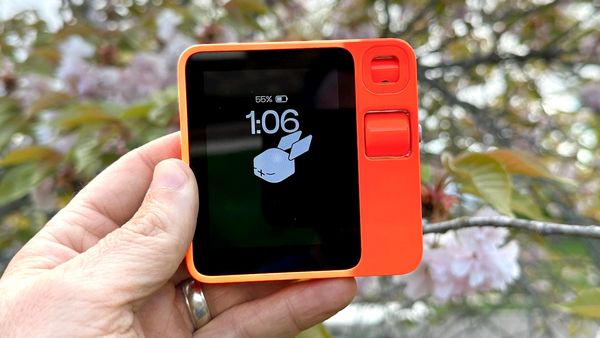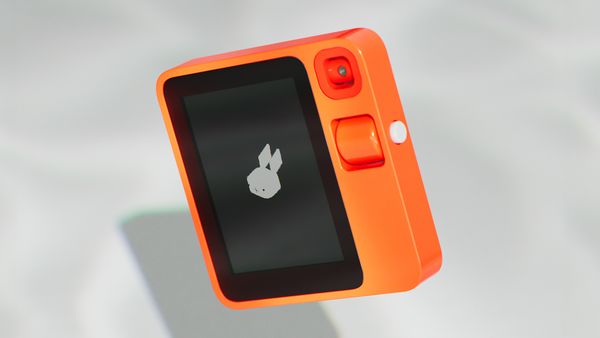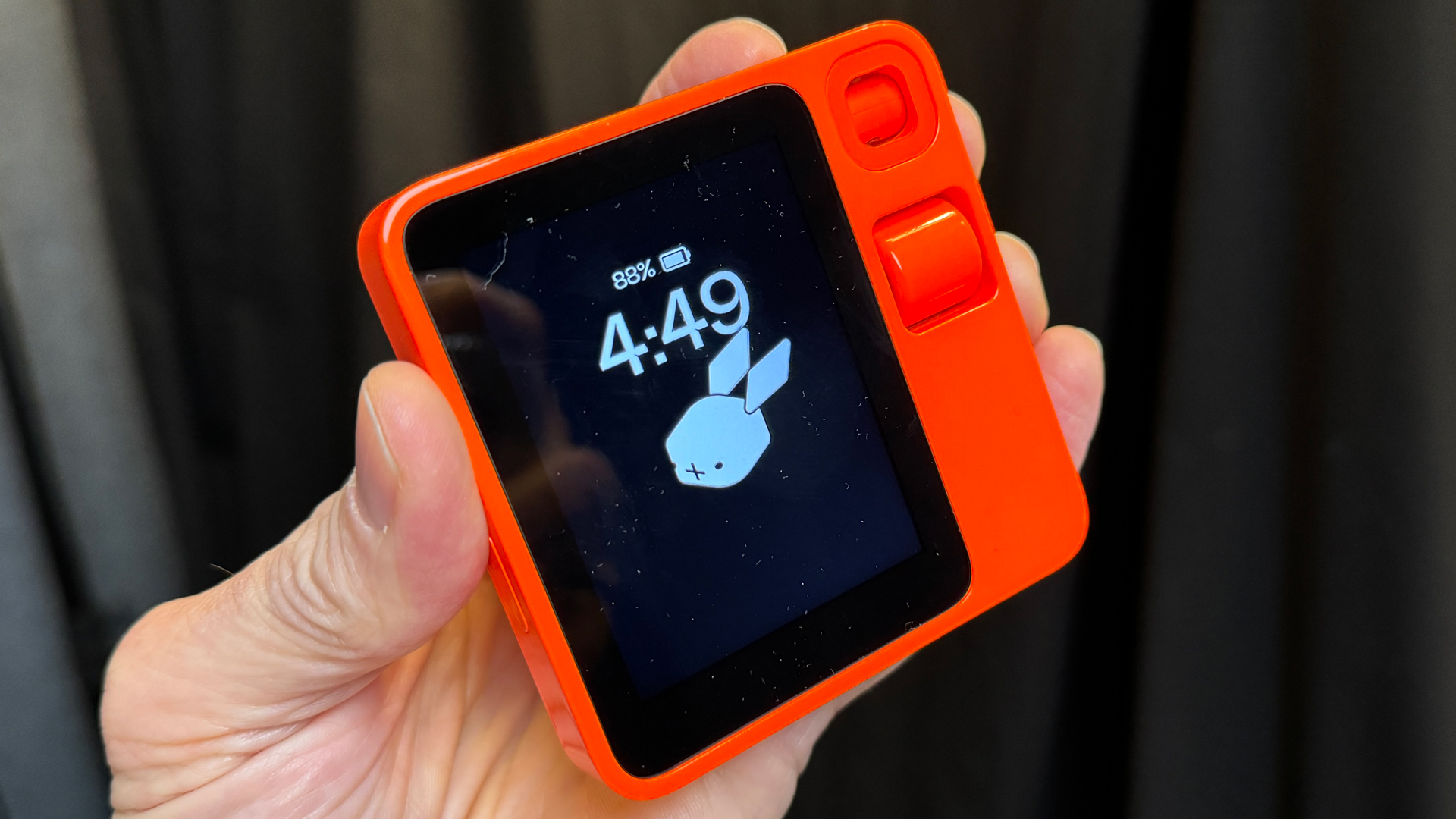
When I first tried the iPhone 17 years ago, I described it as a "think-do" device. It was a beautiful yet complex piece of technology so intuitive that it required no manual or real guidance from anyone. Somehow, in the development of the Rabbit r1 pocketable AI assistant, Rabbit missed this lesson and delivered a beautiful mess.
There is something compelling about the 3-in x 3-in x 0.5-in, 115g, pocket-friendly gadget. It looks like half a phone or a device that might be at home in the Fallout TV show's pre-apocalyptic world.
The bold, orange paint job signals Rabbit's intention to deliver a simple, yet quirky experience. But all I get are the quirks.
Rabbit did not set out to make an iPhone and Android replacement. This is a very different device, one that eschews apps and uses AI to bridge the gap between intention and services. Instead of installing apps on Rabbit r1, you make connections between your device and services like Spotify, Uber, DoorDash, and Midjourney through Rabbit's web interface. It's kind of a crafty way of keeping your credentials off-device. Rabbit OS and the Large Action Model (LAM) handle the rest. All you need to do is ask Rabbit r1 for what you want and it tries to deliver.
That's the vision. The reality is an oddball product that doesn't do enough and is too slow to be more useful than an iPhone or your laptop.
Getting started
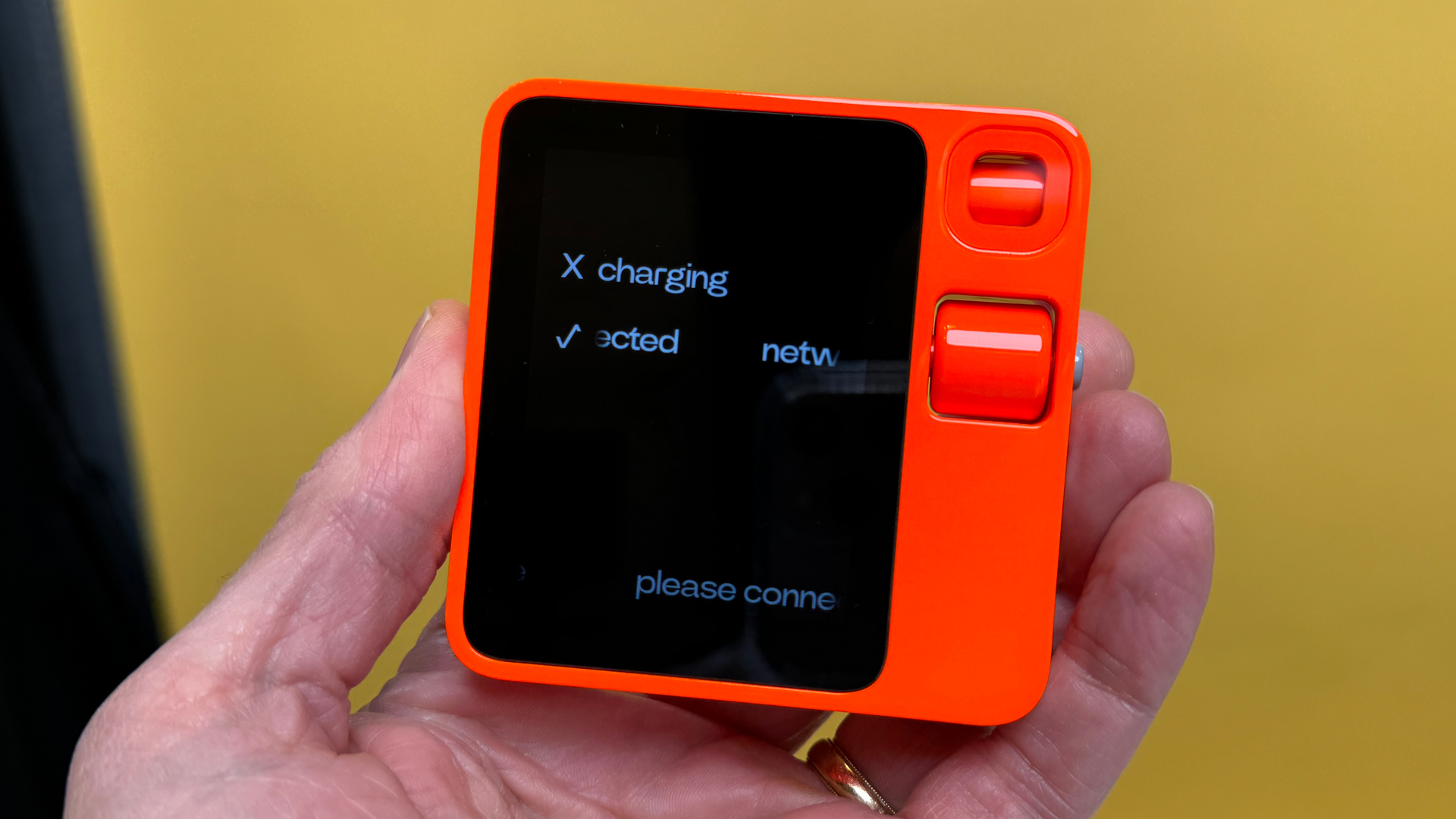
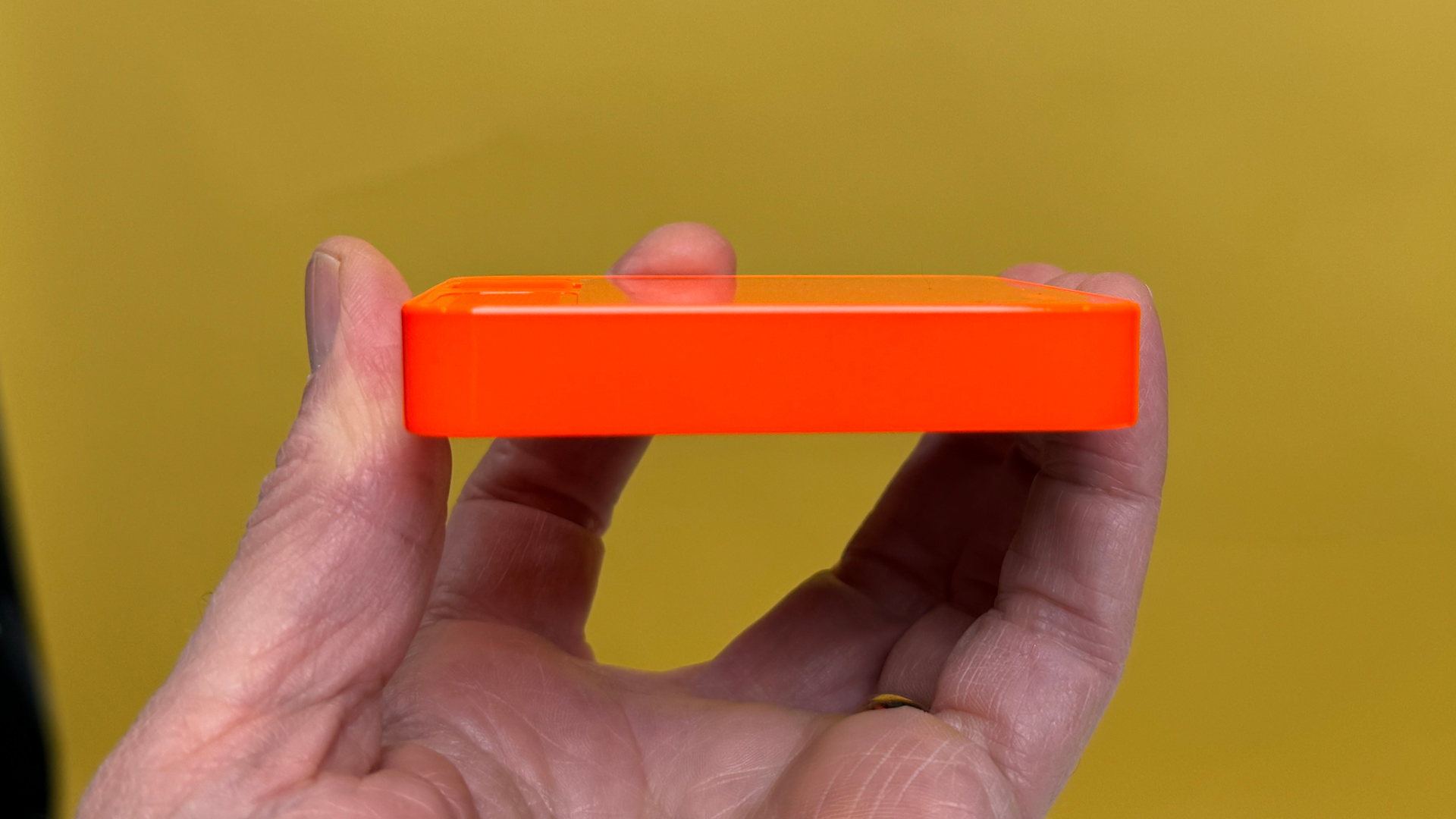
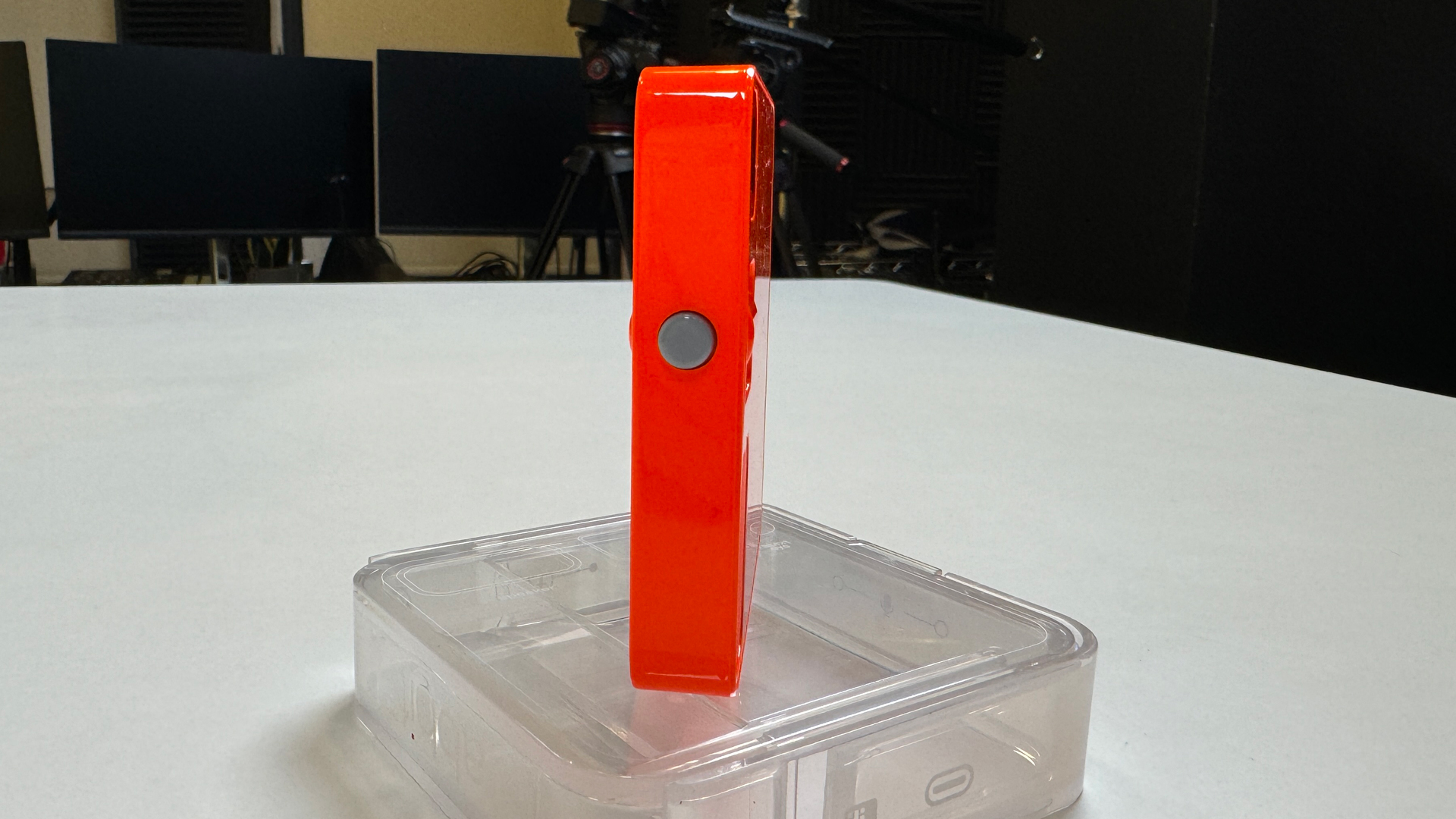
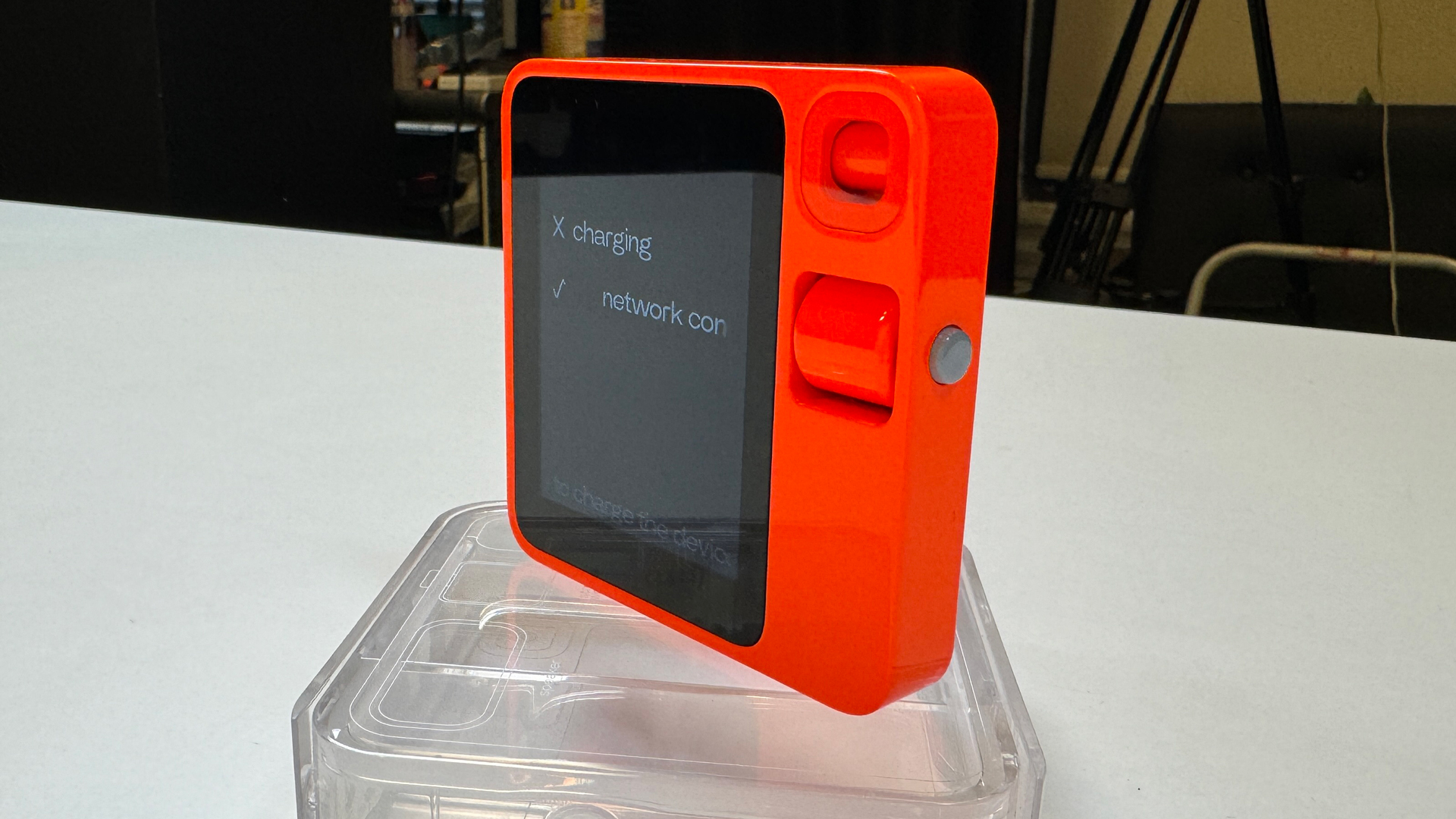
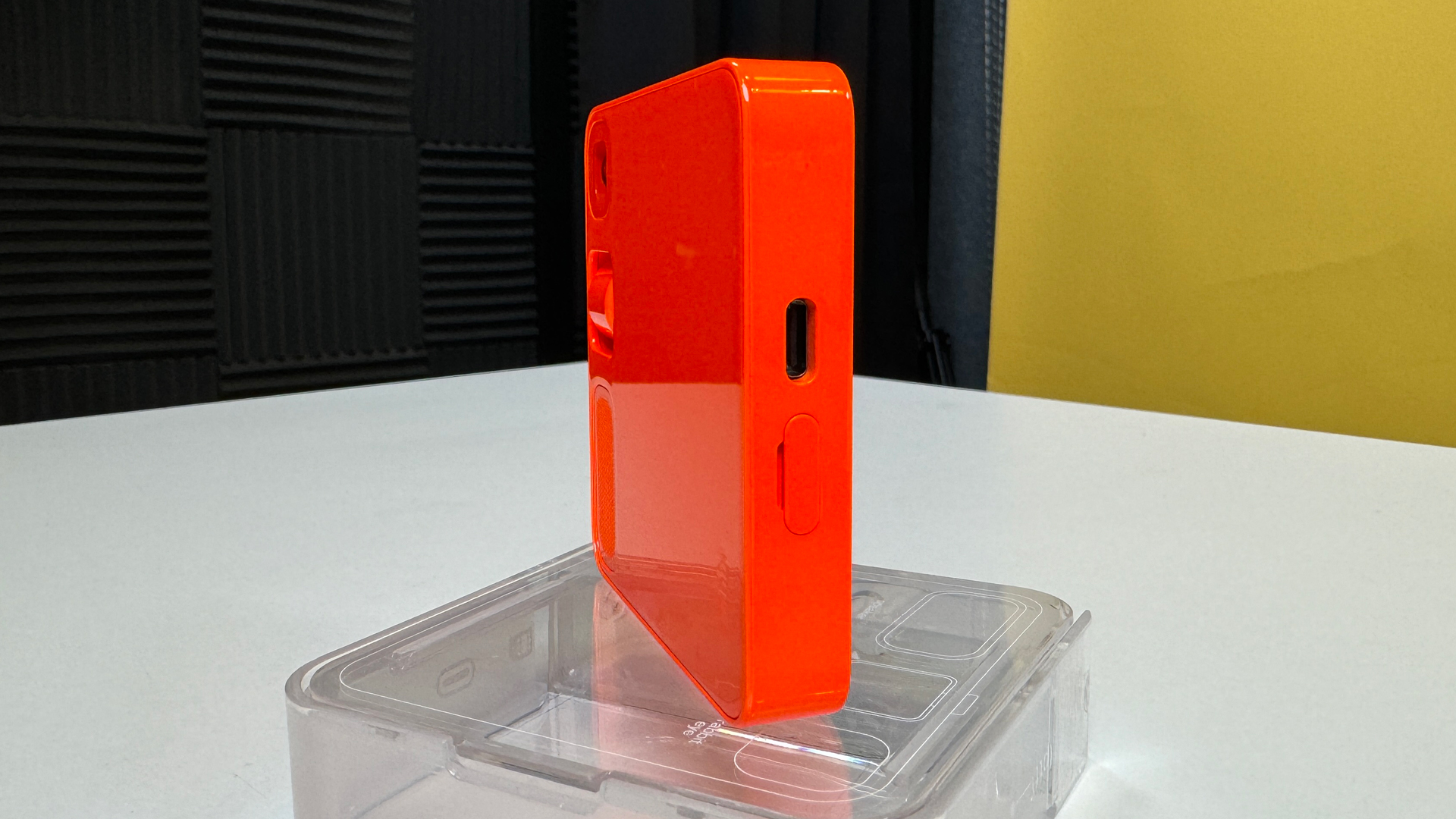
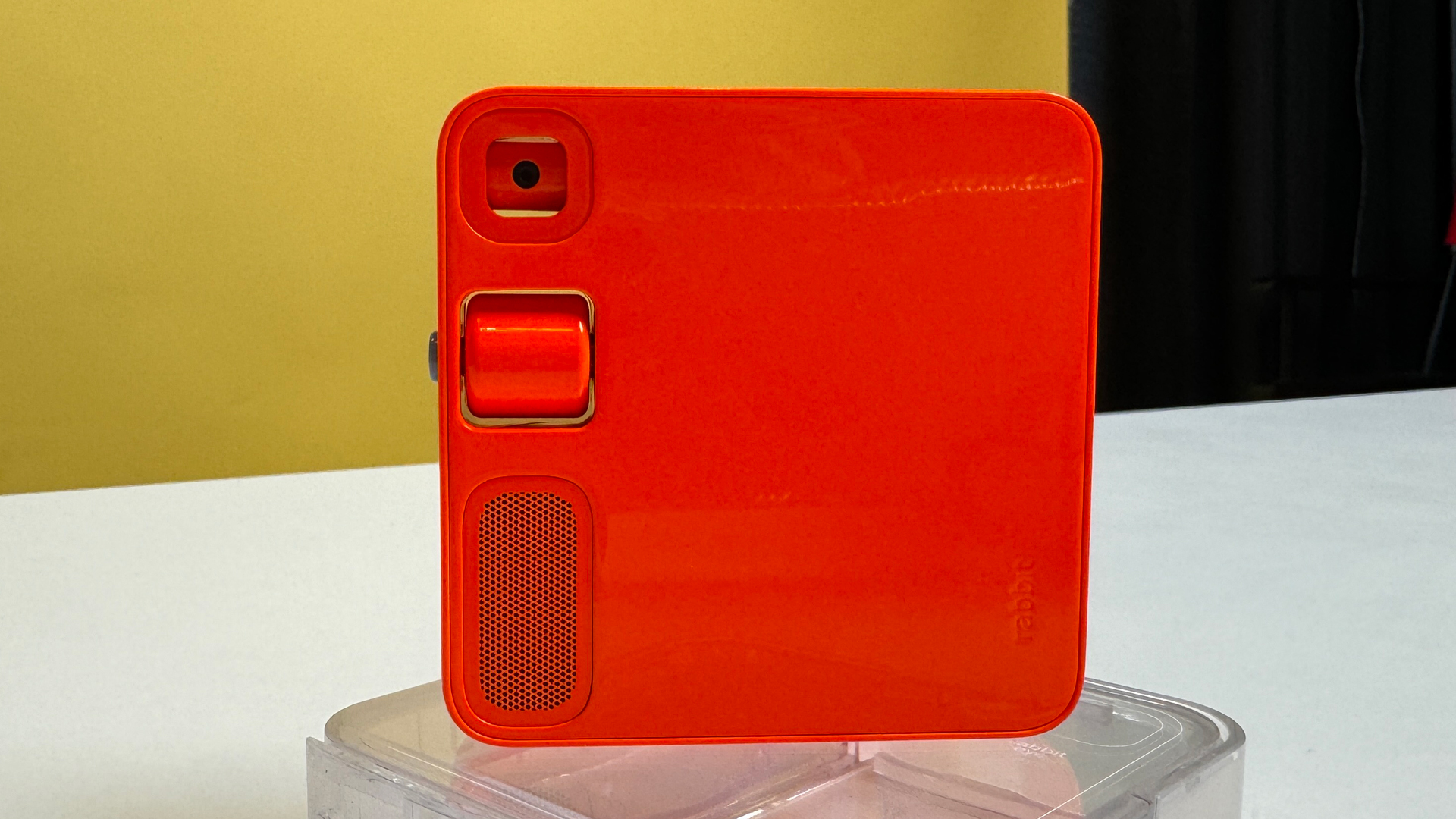
Things start off smoothly enough. Rabbit r1's packaging is sparse; there isn't even a USB-C cable in the box. It's not a big deal since the r1 arrives 95% charged but it also instantly requests via its 2.88-inch TFT screen an update and tells you to plug in the r1 before updating it.
The setup also guided me to join a WiFi network, through which I encountered the comically small virtual keyboard, something I hope to never see or use again.
The update went slowly and it wasn't the only one during my first day of use. After a few hours, the Rabbit r1 stopped responding and asked me to plug it in again for another update. This one, though, fixed my clock so it used the built-in GPS to figure out I'm not on the West Coast of the US and may help with the rapid battery drain.
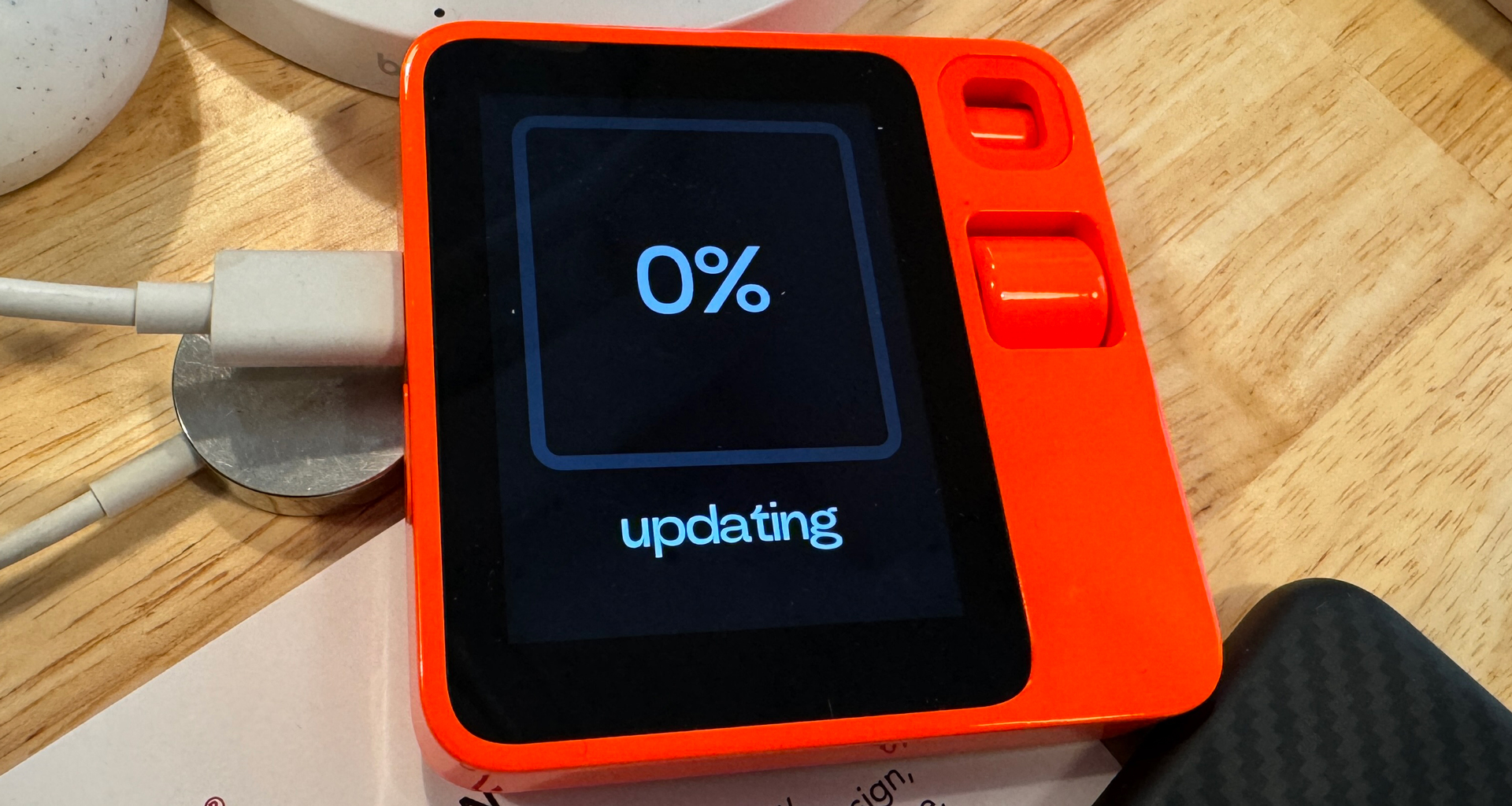
It does it Rabbit's way
If you know how to use a smartphone, you probably won't understand how to use Rabbit r1. It's voice-enabled, but only if you push the gray push-to-talk / select button on the side. You can navigate hidden menus but only if you use the large scroll wheel.
There's a camera, but you can only access it if you double-press the side button. Instead of front and rear cameras, there's just one that rotates front to back when you use the scroll wheel. Rabbit smartly covered the 360-degree camera housing with plastic to protect the workings from dust and grit.
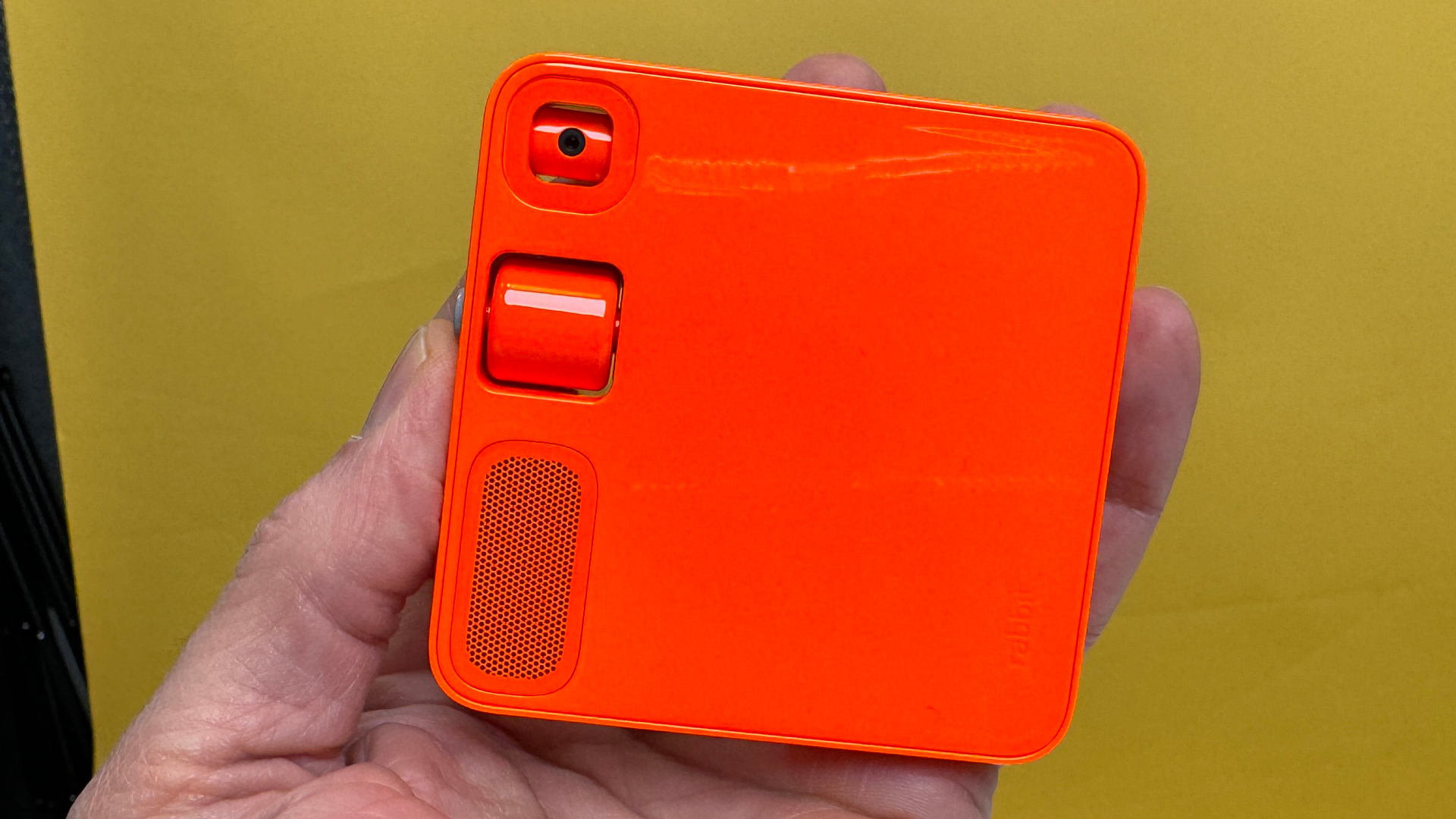
That scroll wheel, by the way, is shiny and smooth like the rest of the r1. It looks great, but it's also awful to use. Remember the original Blackberry? That phone had a nice, knurled wheel that was easy to flick and spin. My digits keep slipping on r1's beefy wheel. It's also counterintuitive. When I scroll down, the page scrolls up.
If the touch screen were designed to be a true navigatable display, this wouldn't matter, but it's not.
If you end up in Settings, for instance, you must use a combination of the scroll wheel and button to move and select various functions and to exit out of Settings. Oh, did I mention how you access Settings? By pressing the side button (to wake up Rabbit R1) and shaking the device.
What kind of insanity is this? Such idiosyncratic features are guaranteed to turn off everyone except the most intrepid technologist.
Smart AI
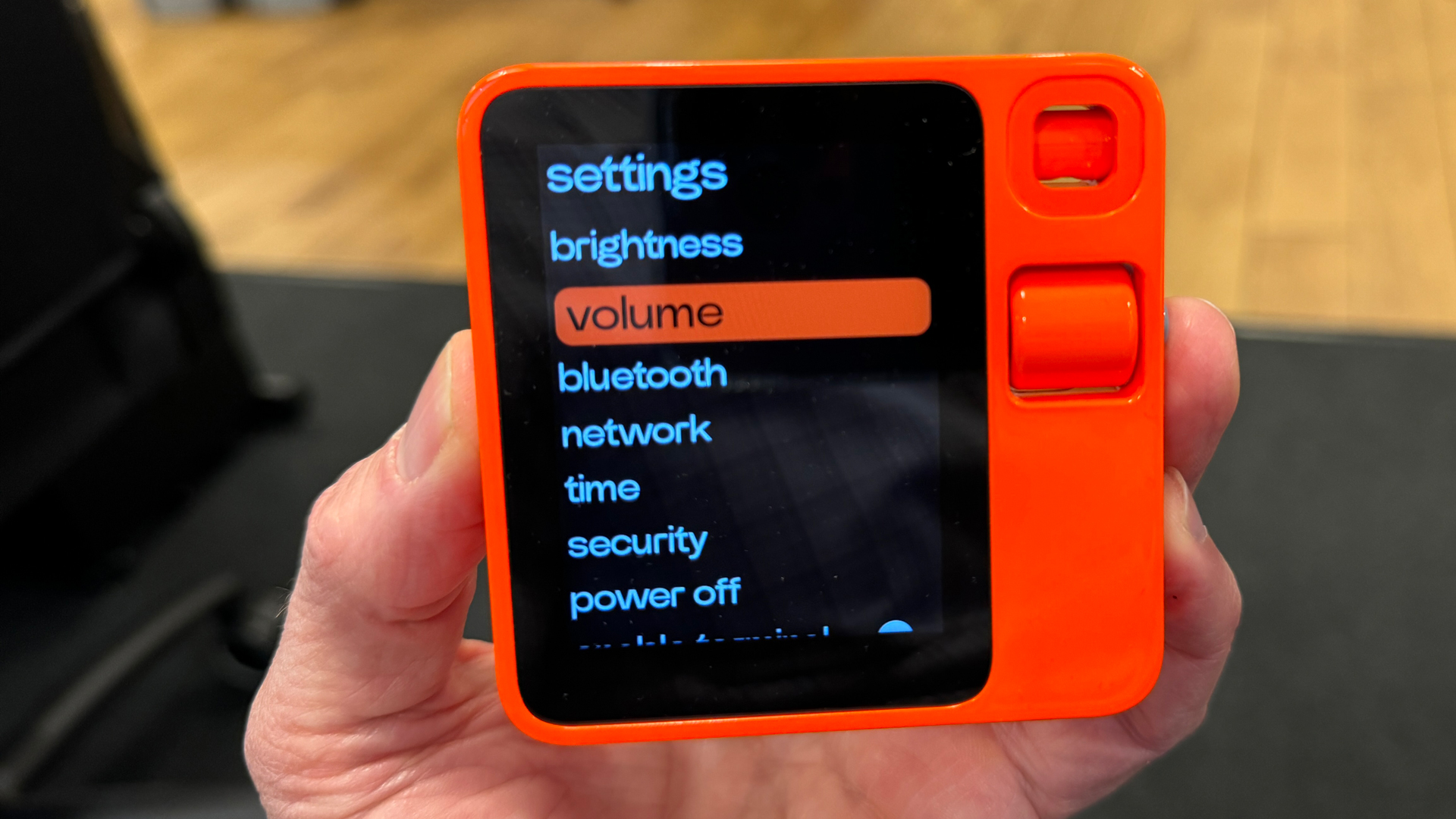
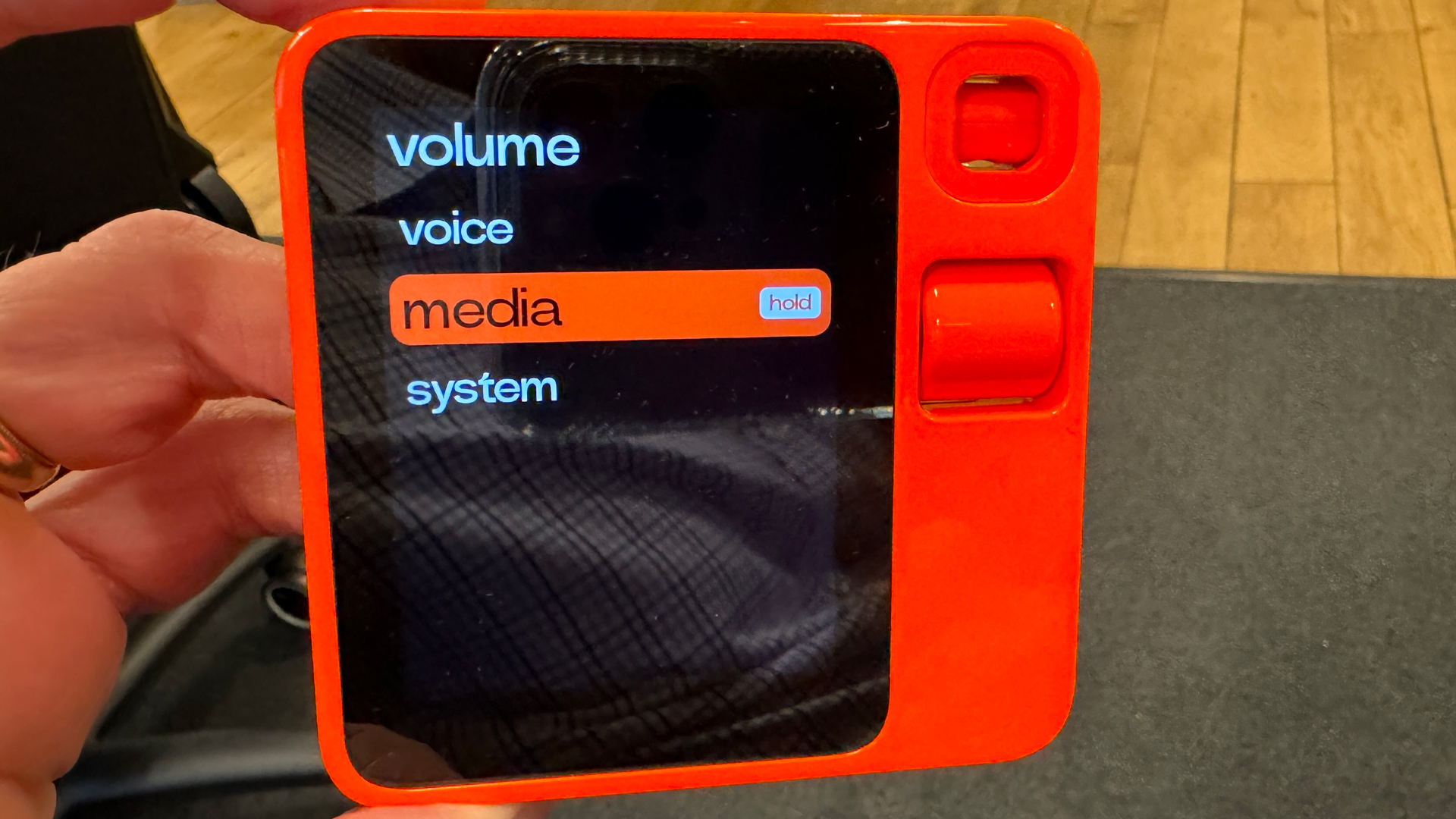
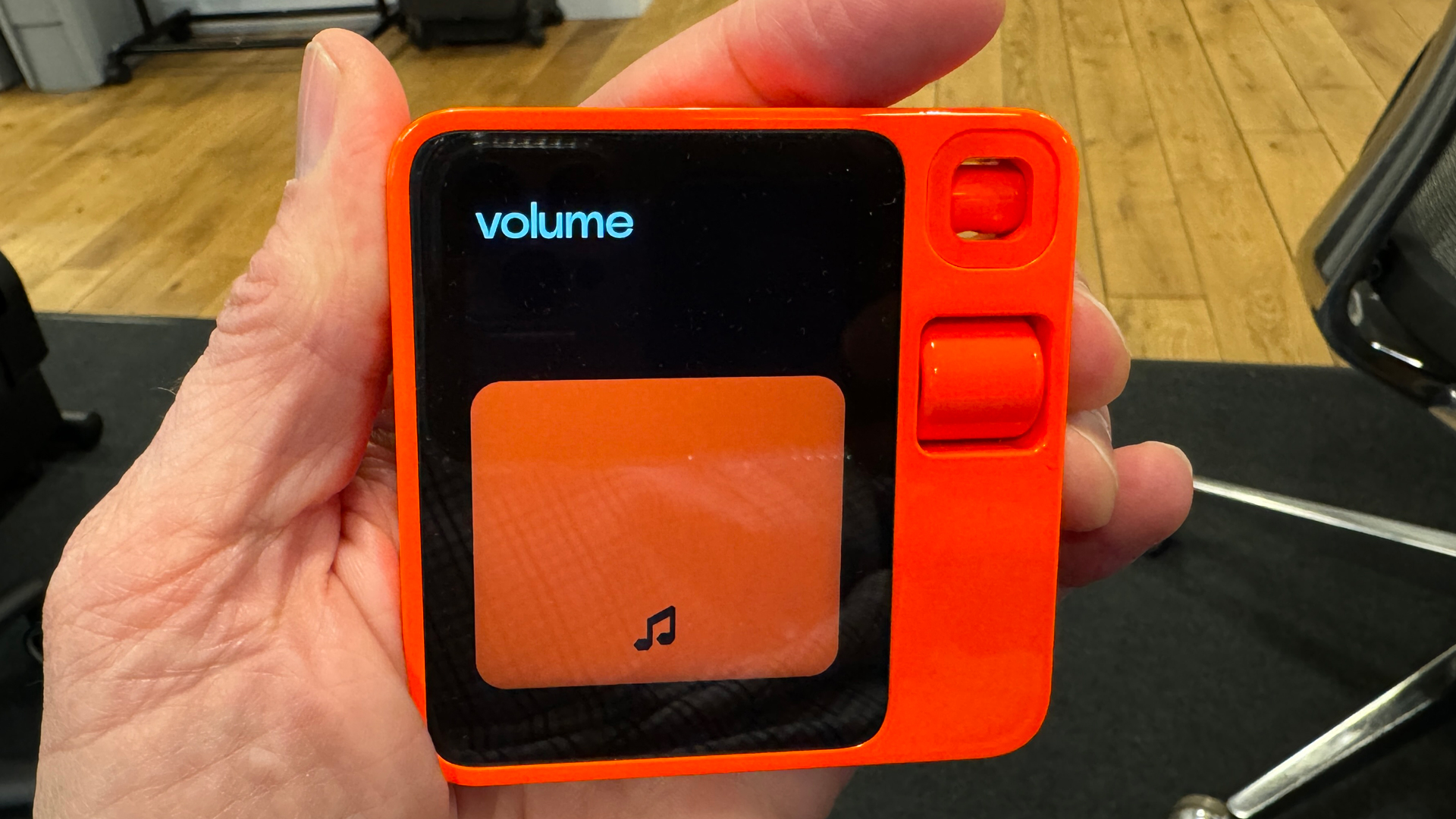
Rabbit r1's platform and AI are the highlights of the gadget. Its Vision System, which you access by double-pressing the select button, does a decent job of identifying most images.
To use it, I pressed the button twice, used the scroll wheel to point the camera front or back, and then, while holding down the button, asked r1 to identify what it saw. (It's worth noting that r1's excellent dual microphones picked up my voice even when I was close to whispering.)
After a few seconds, Rabbit r1's voice (which comes from the speaker on the back) described in detail a coffee cup. It even read the text on it.
It did equally well identifying me as a man in glasses.
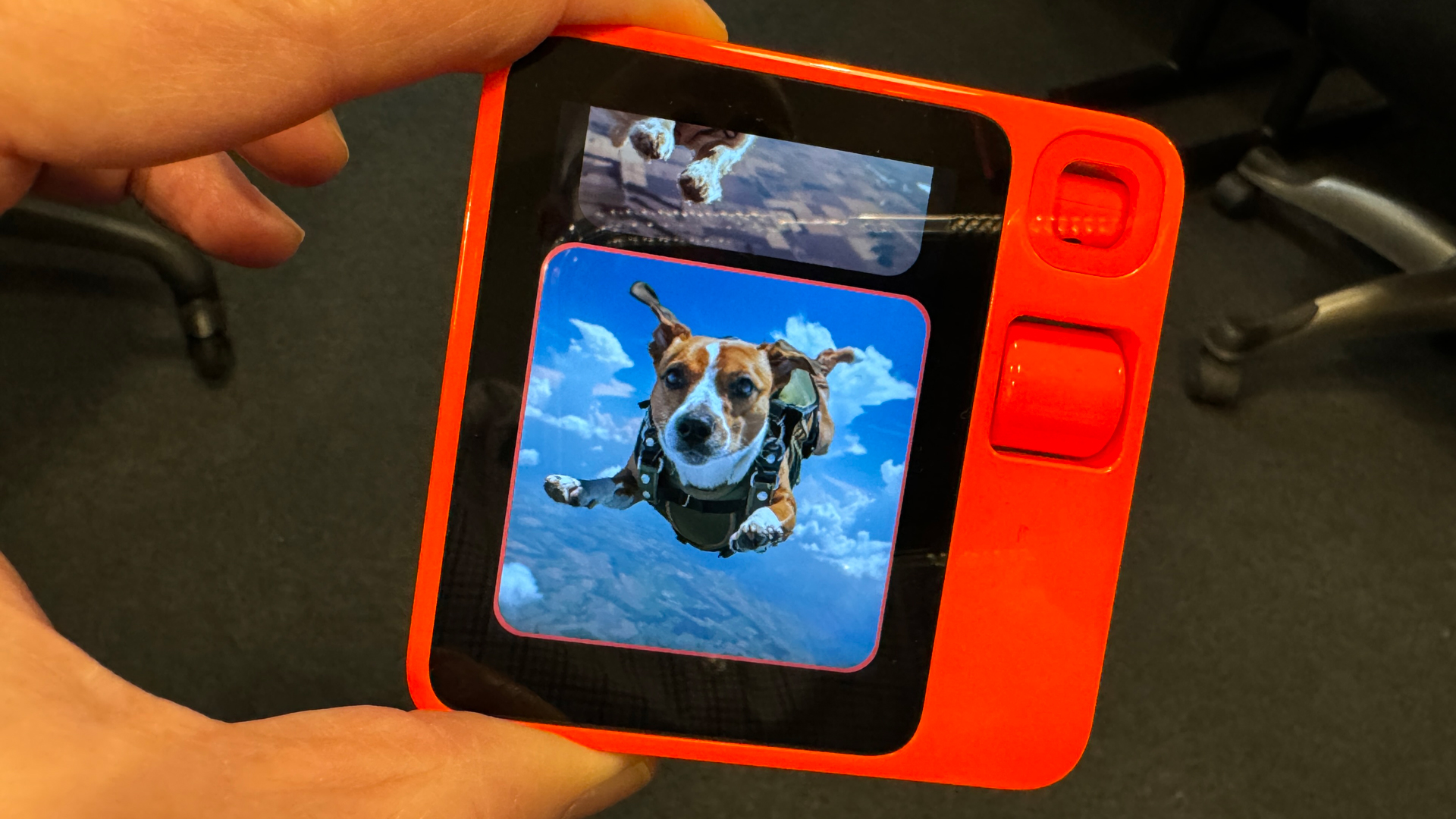
I connected Rabbit r1 to my Midjourney generative image creator account on Discord and then asked Rabbit r1 to make an image of a dog skydiving.
Much of what Rabbit 11 does happens in the cloud. In the case of Midjourney requests, they're sent back to the Midjourney servers through Discord and, if you happen to have that open on the desktop, you can see the results there before they're delivered to the Rabbit r1's screen.
It's already a slow process on Discord and slightly slower on Rabbit r1 where you have to wait for delivery.
Even though I connected my Spotify account to Rabbit r1, I couldn't get it to play music.
Battery life ticks down even when I'm not using it. The device also repeatedly lost its WiFi connection and as a result often sat on my desk like a useless orange puck.
Not good for much
There are so many things Rabbit R1 can't do, like "open a calculator," or "take a picture" that I'm constantly reaching for my phone, a device that has multiple built-in cameras, a working phone, a calculator, and Microsoft CoPilot and OpenAI ChatGPT on it, two generative AI platforms that are faster than Rabbit's LAM and more effective.
Even at the relatively affordable price point of $199, I simply don't get the point of Rabbit r1. It's not replacing or augmenting my phone. It's not intuitive enough that I find comfort and satisfaction in using it. I don't see how the market can or will support a product that is so far from being ready for the mass consumer.
Rabbit R1's chief appeal, namely its cute appearance, is not enough to make me want to carry it everywhere when I can simply pull out my phone and get a thousand times more utility. Which is a shame.






